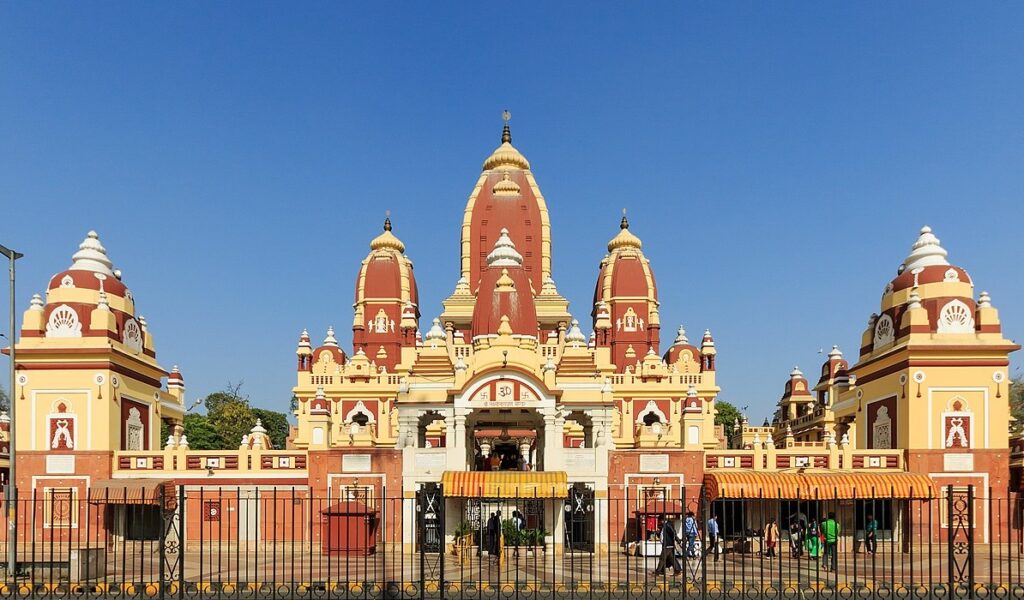Delhi: A City Where History Whispers and the Future Unfolds
Delhi, the capital of India, pulsates with a vibrant energy that resonates from its ancient past to its modern aspirations. Nicknamed the “Dilwalon ki Dilli” (City of Hearts), the State is a captivating tapestry woven from the threads of empires, cultures, and religions. This exploration delves into the essence of Delhi, uncovering its magnificent monuments, diverse neighborhoods, and the relentless spirit that defines its character.
A City Steeped in History: Unveiling Delhi’s Layers
The history of the State dates back thousands of years. Settlements in the area may have existed as early as the sixth millennium BCE, according to archeological data. Delhi has seen many dynasties come and go throughout the ages, each leaving its own architectural heritage. The strong Mauryan Empire, which was founded in the third century BCE, set the groundwork for the urban growth of the metropolis. Famous buildings like the Red Fort, a representation of Mughal might, and the Qutub Minar, a towering victory tower, were built by the Delhi Sultanate, which ruled from the 12th to the 16th century.
The State had its heyday during the Mughal era, which lasted from the 16th to the 18th century. The majestic Jama Masjid mosque, a testament to Mughal architectural brilliance, and the sprawling Red Fort, further embellished with gardens and palaces, stand as enduring testaments to this period. The British Raj, which arrived in the 19th century, shifted the capital to New Delhi, a planned city with imposing colonial buildings like the India Gate war memorial.
A Metropolis of Many Faces: Exploring Delhi’s Diverse Neighborhoods
The State is a metropolis made up of various neighborhoods, each having a distinct personality. Old Delhi whisks visitors back in time with its winding passageways and humming bazaars. The “Silver Street,” Chandni Chowk, is a sensory overload of shops brimming with jewels, textiles, and spices. The iconic Jama Masjid, a work of Mughal architecture, draws both pilgrims and tourists to its commanding skyline. On the other hand, New Delhi features broad boulevards dotted with stately buildings, museums showcasing India’s rich history, such as the National Museum, and verdant parks like Lodi Gardens, a peaceful haven in the middle of the city’s sprawl.
For a taste of contemporary Delhi, explore posh neighborhoods like Gurgaon, a hub for multinational companies and trendy restaurants. South Delhi offers a vibrant cultural scene, with art galleries, theaters, and historical sites like Humayun’s Tomb, a precursor to the Taj Mahal. Paharganj, a backpacker’s paradise, bustles with budget guesthouses, cafes serving international cuisine, and shops selling souvenirs and travel essentials. This rich tapestry of neighborhoods ensures that there’s something for everyone in Delhi, from history buffs to foodies and art enthusiasts.
A Haven for Foodies: Unveiling Delhi’s Culinary Delights
The State’s food is a delicious fusion of Mughal culinary traditions and local influences. A significant component of the city’s gastronomic landscape is street food. Street sellers provide mouthwatering butter chicken, delicious kebabs, and crispy samosas. Enjoy a lunch at a Karim’s restaurant, which is well-known for its Mughlai specialties including kebabs and biryanis, for a more sophisticated dining experience. There are several options for fine dining, which offers international cuisine in addition to creative takes on traditional Indian dishes.
Delhi’s varied areas offer something for every taste. International cafes and gourmet stores can be found in abundance at Khan Market, whereas paratha (stuffed flatbread) is the specialty of Chandni Chowk. It is known for its street cuisine, especially for its “kulfi,” a deep, creamy Indian ice cream, and “chaat,” which are spicy, acidic appetizers. The State’s food scene provides a great adventure for every taste bud, whether you’re looking for a fancy meal or a fast bite to eat on the run.
A Hub of Culture and Modernity: From Ancient Sites to Bustling Malls
Delhi is a city where ancient sites co-exist with modern wonders. Witness the changing of the guard ceremony at the Rashtrapati Bhavan, the presidential palace, or explore the serene beauty of Akshardham Temple, a modern Hindu architectural marvel. Catch a performance at the prestigious Shri Ram Centre for Performing Arts, showcasing Indian classical dance and music, or lose yourself in the vibrant energy of a Bollywood movie at a local cinema.
It’s shopping scene caters to every budget and taste. Dilli Haat, a government-run craft bazaar, offers a treasure trove of handcrafted textiles, jewelry, and souvenirs from across India. Khan Market, with its upscale boutiques and designer stores, is a haven for luxury shopping. Delhi’s malls, like the DLF Emporio and Select Citywalk, offer a contemporary shopping experience with international brands and multiplex cinemas. For a unique experience, explore the Sunday book market at Daryaganj, a haven for bibliophiles, or discover hidden gems in the antique shops of Khan Market.
Looking Ahead
The State has a promising future. With an emphasis on infrastructural development, sustainability efforts, and supporting a flourishing startup sector, the city is continuously changing. Even with persistent problems like pollution and traffic jams, Delhi will be able to adapt and grow because of its innovative and resilient attitude.
In Conclusion
The city of Delhi is vibrant with activity. It has a distinctive fusion of history, culture, and modernity, from the imposing grandeur of its historical sites to the lively vitality of its varied neighborhoods. Travelers looking for an amazing experience will find the city appealing as it embraces the future while cherishing its heritage. The State greets visitors with open arms, a warm smile, and a dish of its delicious street cuisine, regardless of whether they are history buffs, foodies, or just looking for a glimpse into the heart of India.

